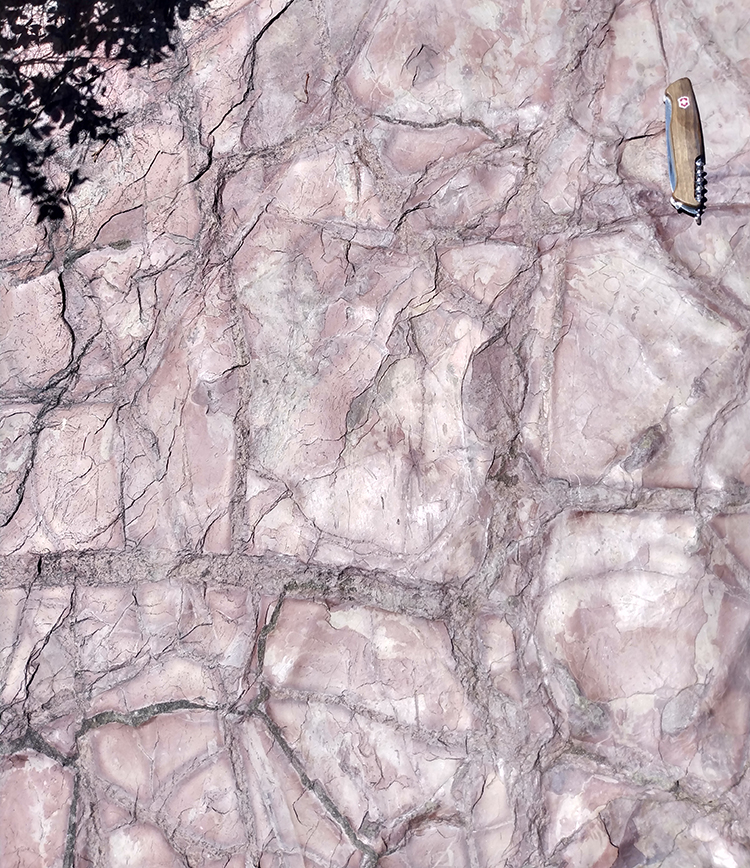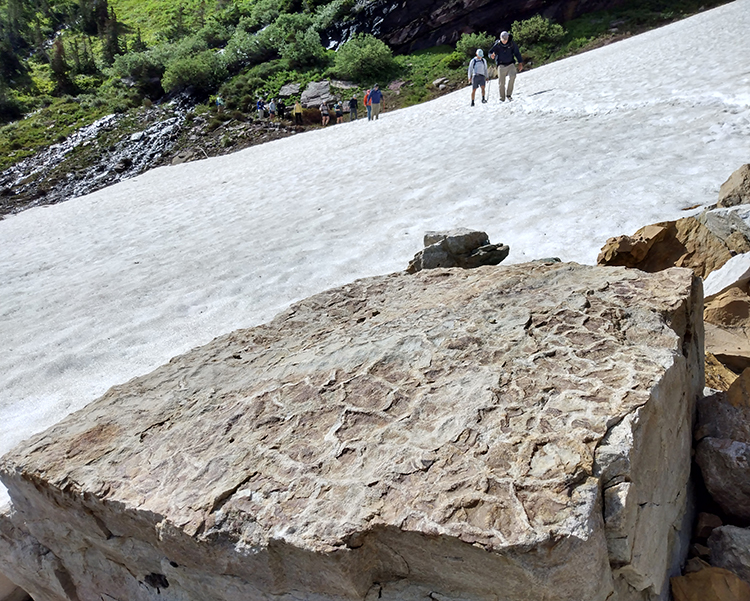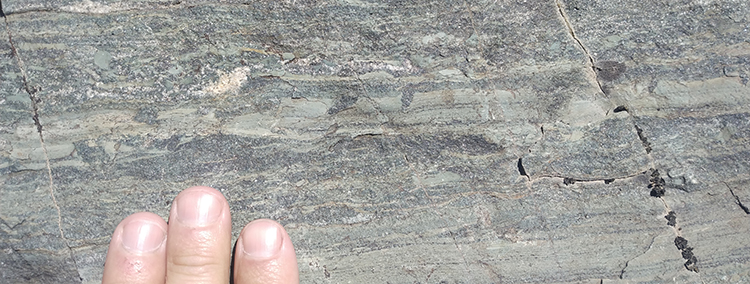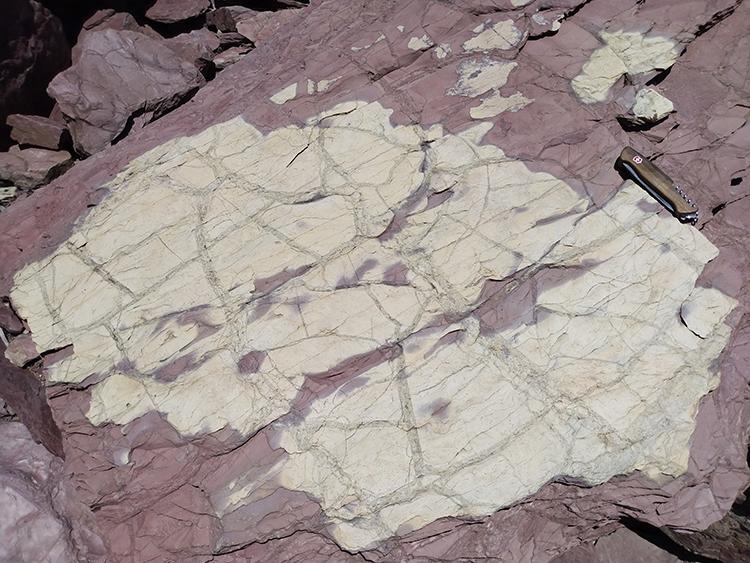30 July 2022
Well-preserved mudcracks in Belt argillite, Glacier National Park, Montana
Posted by Callan Bentley
I spent last week in western Montana, teaching my annual “Geology of Glacier National Park” for Montana State University’s Master’s of Science in Science Education program. As usual, it was a fulfilling and enriching experience.
There are many great things about Glacier’s geology, but a perennial favorite for me is the abundance of truly ancient primary sedimentary structures, like these mud cracks:

Originally formed during the Mesoproterozoic, these delicate patterns speak of a very shallow Belt Sea, where mud deposited at high tide or in the wet season was then exposed to the air during low tide, or the dry season, inducing desiccation and contraction. The example above shows the resulting mud cracks filled with more mud, but they can be filled with sand, too, as this inverted block shows:

In cross-section, the mud cracks make V-like shapes where younger layers “bite” down into their predecessors. Here’s an example in green (chlorite-rich argillite of the Appekunny Formation) and another in red (hematite-rich argillite of the Grinnell Formation):


My favorite new example of this phenomenon is one I’ve walked by a dozen times before without noticing. It’s on the trail up to Grinnell Glacier, at the spot just before the waterfall-on-the-trail, where the route was closed this year due to a hazardous snowfield crossing. Forced to have my lunch there instead of atop the stromatolites up top, I was forced to examine my new surroundings. I appreciated this one especially:

Here, though the mud was deposited under oxidizing conditions (=red), later reducing fluids moved through the sediment (or sedimentary rock), altering blotchy portions of it (=pale green). I love the “palimpsest” overlap between the oxidation/reduction contrast and the pattern of mud cracks. Whether you’re a geochemist or sedimentologist, there’s a lot to love in this slab!


 Callan Bentley is Associate Professor of Geology at Piedmont Virginia Community College in Charlottesville, Virginia. He is a Fellow of the Geological Society of America. For his work on this blog, the National Association of Geoscience Teachers recognized him with the James Shea Award. He has also won the Outstanding Faculty Award from the State Council on Higher Education in Virginia, and the Biggs Award for Excellence in Geoscience Teaching from the Geoscience Education Division of the Geological Society of America. In previous years, Callan served as a contributing editor at EARTH magazine, President of the Geological Society of Washington and President the Geo2YC division of NAGT.
Callan Bentley is Associate Professor of Geology at Piedmont Virginia Community College in Charlottesville, Virginia. He is a Fellow of the Geological Society of America. For his work on this blog, the National Association of Geoscience Teachers recognized him with the James Shea Award. He has also won the Outstanding Faculty Award from the State Council on Higher Education in Virginia, and the Biggs Award for Excellence in Geoscience Teaching from the Geoscience Education Division of the Geological Society of America. In previous years, Callan served as a contributing editor at EARTH magazine, President of the Geological Society of Washington and President the Geo2YC division of NAGT.
Fascinating: is it possible to know the GPS coordinates so I might visit? Thanks, Gary
Mudcracks are *everywhere* in Glacier. You won’t have to look too hard to find examples like these. That said, the last example in this post is in this pile: https://www.google.com/maps/@48.7739757,-113.7127556,12m/data=!3m1!1e3